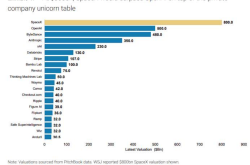Xiaomi 16 Configuration Unveiled: 6000mAh Battery + Periscope Telephoto, Ushering in the Most Elegant 2.0 Small Screen Flagship!
![]() 06/03 2025
06/03 2025
![]() 464
464
The Xiaomi 16 series, the next iteration of Xiaomi's digital flagship, has been making frequent appearances online recently. Despite being months away from its official release, numerous leaks have already painted a clear picture of this anticipated device. From its design to performance, and from imaging to battery life, the Xiaomi 16 series aims to uphold its status as an "all-around small flagship," boasting upgrades and optimizations across various aspects, particularly in its processor, screen bezels, battery life, and system ecosystem. This promises to be a highly anticipated product.

Design-wise, the Xiaomi 16 is set to continue with a straight-screen design, featuring an expected screen size of 6.36 inches. It embodies the small-body trend, catering to the preferences of users who favor compact flagships. CAD renderings reveal that this generation maintains the design language of its predecessor, boasting a clean and sleek overall look with noticeable refinements in details, such as narrower bezels for a more immersive viewing experience. Xiaomi 16 employs LIPO packaging technology, reducing the physical bezel to approximately 1.1mm, coupled with extremely narrow black border control, further enhancing the screen-to-body ratio. The device's thickness is meticulously managed, anticipated to be within 8mm, and its weight is less than 190g, making it exceptionally lightweight among comparable Android flagships. Additionally, the body material may incorporate multiple splicing processes of glass, metal, and leather, striking a balance between texture and feel. The rear camera module adheres to Leica's matrix triple camera layout, exhibiting a more organized design and a contemporary aesthetic.
In terms of its core specifications, the Xiaomi 16 will be the first to be powered by the Qualcomm Snapdragon 8 Gen4 (or Snapdragon 8 Elite 2) processor, Qualcomm's pioneering chip built on TSMC's N3P 3nm process, delivering significant enhancements in both performance and energy efficiency. This processor incorporates Qualcomm's self-developed Oryon CPU architecture, boasting higher clock speeds and a qualitative leap in AI computing power, which augments the operating efficiency and intelligent support of the HyperOS system. Coupled with LPDDR5X memory and UFS 4.x flash storage, the Xiaomi 16's overall performance will undoubtedly remain at the forefront of the Android realm.
Regarding battery life, the Xiaomi 16's battery capacity may soar to an impressive 6500mAh or even higher, marking a substantial improvement over the 5400mAh of the previous Xiaomi 15 series. Despite its increased capacity, the device's thickness and weight remain impressively controlled, thanks to the redesign of its internal structure and advancements in component stacking technology. For fast charging, the Xiaomi 16 will support 100W wired fast charging and 50W wireless fast charging, promising an exceptional battery experience. Such a battery configuration in a small screen flagship weighing less than 190 grams exemplifies Xiaomi's engineering prowess in structural stacking and thermal management.

The imaging system continues its deep collaboration with Leica. The Xiaomi 16 features three 50-megapixel rear cameras, with the primary camera employing a new generation of large sensors, capable of capturing more light and delivering superior performance in low-light conditions. The ultra-wide-angle lens is also of high quality, while the telephoto lens supports 3x zoom and macro shooting, underscoring practicality and humanistic elements. Although it does not adopt a periscope structure, considering the overall thickness control and the daily shooting needs of its target audience, this imaging combination strikes a good balance. At the imaging algorithm level, it is anticipated to further integrate Leica's style, supporting additional film filters and shutter optimizations, making it ideal for users who enjoy documenting life and emphasize the aesthetic appeal of tone.
In terms of software, the Xiaomi 16 will be the first to come equipped with the HyperOS 3.0 version, built on Xiaomi's self-developed bottom layer. This version not only optimizes smoothness and power consumption control but also integrates more AI capabilities, including image recognition, voice control, and global scheduling. Simultaneously, the system level will provide deeper support for cross-device collaboration, laying the groundwork for future Xiaomi automobiles, smart homes, and other ecological devices. HyperOS is viewed as a pivotal strategy for Xiaomi in the coming decade, and its initial full-fledged implementation on the Xiaomi 16 holds significant importance.
Moreover, other details about the Xiaomi 16 series are equally noteworthy. For instance, the screen will support 1.5K resolution and an LTPO 1-120Hz adaptive refresh rate, offering a smoother visual experience. The under-screen fingerprint recognition employs a 3D ultrasonic solution, performing better in wet hand unlocking and enhancing security. The entire device supports IP68 or even IP69 dust and waterproof ratings, bolstering both durability and practicality. Additionally, there are rumors that the Xiaomi 16 Pro or Ultra version might support satellite communication functionality, further expanding communication capabilities in extreme scenarios, although the inclusion of this feature in the standard version awaits official confirmation.
Concerning the release date, current leaks generally point to September or October this year, with September 16th frequently mentioned as a potential launch date. Considering Qualcomm's new generation of Snapdragon Summits scheduled for late September, it is plausible for Xiaomi, as a close collaborator, to choose to unveil its device post-summit. Regarding pricing, given the cost of the new generation of chips and the overall configuration improvements, the starting price of the Xiaomi 16 is likely to increase, potentially around 5000 yuan. Specific details, however, will have to await official announcements.

In conclusion, while building upon the strengths of its predecessors, the Xiaomi 16 series has further refined its core areas, including processor performance, battery life, imaging system, and system ecosystem. It is particularly remarkable to maintain such a high level of overall quality within the context of a small screen flagship. As the release date draws near, more details about this device will gradually come to light. This upcoming flagship has the potential to once again set a new benchmark for small screen Android flagships.






